Sweet Peas for Your Sweetheart
Sweethearts abound in February thanks to Valentine’s Day. What more appropriate flower for sweethearts than sweet peas!
Did you know that sweet peas (Lathyrus odoratus) were the focus of a wildly popular plant craze in the late nineteenth and early twentieth centuries? This annual, a native of southern Italy, Sicily, and the Aegean Islands, had gardeners on both sides of the Atlantic growing hundreds of varieties with colors ranging from ‘cream-pink’ and ‘azure blue’ to ‘rosy salmon’ and ‘fiery orange scarlet.’ The species name, odoratus (Latin for scented), gives a clue to one of this plant’s major attractions for growers.
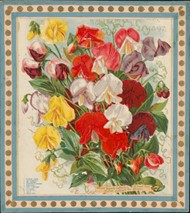
The Archives of American Gardens at Smithsonian Gardens includes numerous historic resources relating to this flower, particularly from the W. Atlee Burpee & Co. Records collection. The famed Burpee seed company once boasted that “We are acknowledged as Headquarters for Sweet Peas in America.” In the early decades of the twentieth century it offered what it claimed was “the Most Complete Collection in the World” of sweet peas. W. Atlee Burpee, the founder of the firm, shared a close working relationship with the Scotch horticulturist Henry Eckford in pursuit of new sweet pea varieties. Eckford, considered ‘the father of sweet peas,’ received the Royal Horticultural Society’s Victoria Medal of Honour in 1905 for his decades of hybridization work with sweet peas.
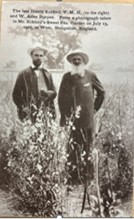
The sweet pea craze sparked the establishment of England’s National Sweet Pea Society in 1900. The organization still flourishes today. The Burpee & Co. Records at AAG include several Annuals published by the Society from the 1910s to the 1930s that are filled with content about flower shows, committee reports, and tips on growing sweet peas. Articles contributed by members covered everything from “The Joys and Sorrows of the Hybridizer” to “Sulphuric Acid an Aid to Germination.” The Burpee firm also published a number of publications devoted solely to sweet peas. One quoted Reverend William T. Hutchins of Massachusetts who loftily remarked that “The Sweet Pea has a keel that was meant to seek all shores; it has wings that were meant to fly across all continents.”
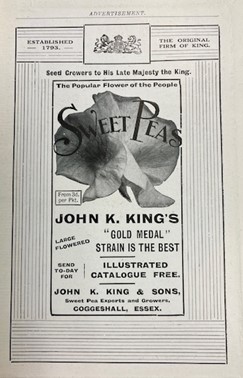
In the many language of flower dictionaries published throughout the nineteenth century—volumes that linked specific plants to different emotions or character traits–sweet peas were typically associated with ‘delicate pleasures,’ no doubt thanks to their soft, frilly petals and frequently pastel shades. In actuality, sweet peas are cold-hardy up to a point and can tolerate frost but not a hard freeze. They bloom from late spring to fall.
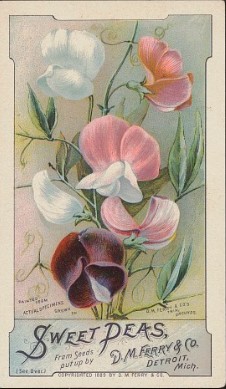
Sweet peas have also held their own in the realm of science. While German-Czech biologist Gregor Mendel’s (1822-1884) hybridization experiments with garden peas (Pisum sativum) get much of the attention, English geneticist Reginald Punnett’s (1875-1967) work with sweet peas over a century ago resulted in important genetic discoveries too. Sweet peas’ ability to self-pollinate aided Punnett in his research.
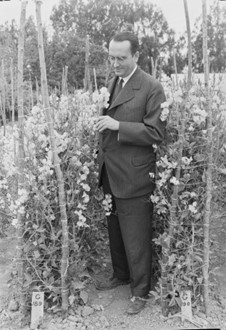
Today, sweet peas are still a popular garden choice. Natural climbers that can grow as high as 6 feet or so, they are often trained along trellises, poles, tuteurs, and networks of strings or wires. “Bush” varieties are shorter and suited to containers. Sweet pea flowers and tendrils are sometimes used in wedding arrangements. With so many varieties available, there is one out there that is likely to fit any wedding color scheme.
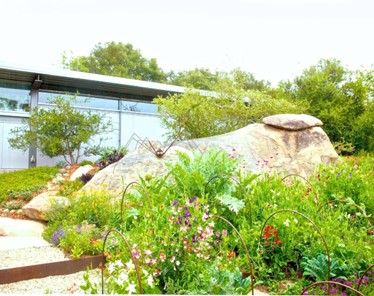
Visit the Smithsonian’s online catalog, sova.si.edu, to see additional historic and contemporary images from the Archives of American Gardens that celebrate sweet peas and so many other garden favorites. What would Valentine’s Day be without flowers!
All images are from Smithsonian Gardens’ Archives of American Gardens and Horticultural Artifact Collection.

